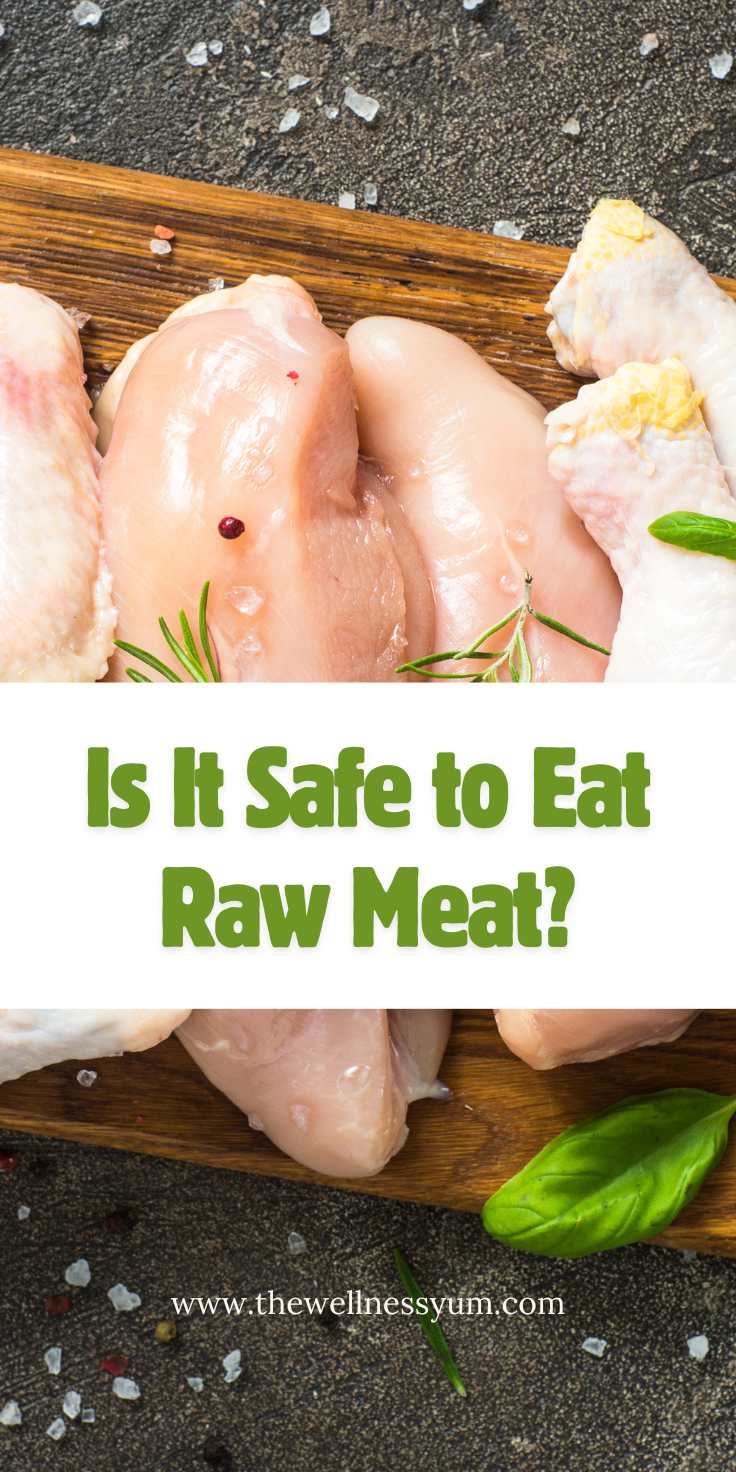A raw meat diet for dogs is becoming more popular. It's intended to resemble what a dog would eat in the wild rather than giving them prepared, processed meat, which might deplete them of some of their natural nutrients in the process. Can humans, on the other hand, consume raw meat? That is something that has been argued for hundreds of years. Here are some intriguing facts regarding raw meat and how it interacts with the human diet that you probably didn't know about until we clear the air on this one.

Is It Safe to eat raw meat?
You go to your favourite restaurant and order a rare steak to enjoy with your friends. It looks more like raw steak than cooked when it is finished. Is it safe to consume? Alternatively, you may just prefer the taste of raw meat to that of cooked meat (believe it or not, some people do!). Is there any danger in stuffing one's face?
A few steak recipes are intended to be eaten raw, such as ribeye and striploin. Raw ground meat patties are served with raw egg yolks, onions, and a variety of other ingredients in a dish known as steak tartare, for example. The fact is, no professional would ever propose that you prepare steak tartare at home - unless, of course, you are a skilled cook who knows exactly how to do it right!
The consumption of raw meat might be dangerous if the meat is of poor quality. Using ground meat from the grocery store to make a steak tartare is a huge, major no-no in my opinion. That meat might include a variety of unknown components from a complete herd of cows and, if taken uncooked, could introduce deadly germs into your digestive tract.
A raw steak from the steakhouse may be refused by some while others will gladly accept the order and prepare the meat for you. What's the difference? When you order a raw steak, you can be certain that the steakhouse will utilise high-quality meat and will know precisely where it came from. They also have highly-trained professional chefs on staff who know how to properly handle the meat in order to prevent it from being infected.
read also: 14 Best Diet Tips to Lose Weight
How to Eat Raw meat Without Getting Sick
Raw meat, like raw chicken and pig, may be hazardous because it includes a high concentration of germs that might be harmful. Although it is safer than eating raw chicken or pig, this does not imply that it is completely risk-free. A few of the illnesses or viruses that might be acquired through eating raw steak are listeriosis, salmonellosis, and E. Coli poisoning, to name a few. In order to guarantee that most of the harmful germs that may be remaining on the meat are eliminated, the meat must be cooked until it reaches a minimum internal temperature of 145 degrees Fahrenheit and then allowed to rest for a few minutes.
When it comes to eating raw meat, there are no hard and fast rules, as long as you are committed to doing so. The most essential thing you can do is get meat from a reputable supplier. Place an order for meat online from a reputable supplier, or visit your local butcher, who knows exactly where every slab of meat comes from. To verify that the meat comes from the same animal, acquire full slabs of meat and chop it yourself (or watch the butcher do it) rather than buying individual cuts.
If you're not planning to consume your raw steak right away, be sure to put it in the freezer or refrigerator as soon as you get it home. Make sure to store your steak in a closed container, away from other meals, and out of the way of anything that could leak on it. Maintain a temperature of 40 degrees Fahrenheit or below in your refrigerator to keep everything nice and cool!
read also: 5 Substitutes for Buttermilk
The bottom line
Although we don't necessarily encourage eating raw meat (since there are so many things that may go wrong! ), it's not a bad idea to keep in mind if you want to experiment with different flavours. Steaks may be kept as safe as possible for raw eating if they are handled with care and sourced from just the finest sources available.





Leave a Reply